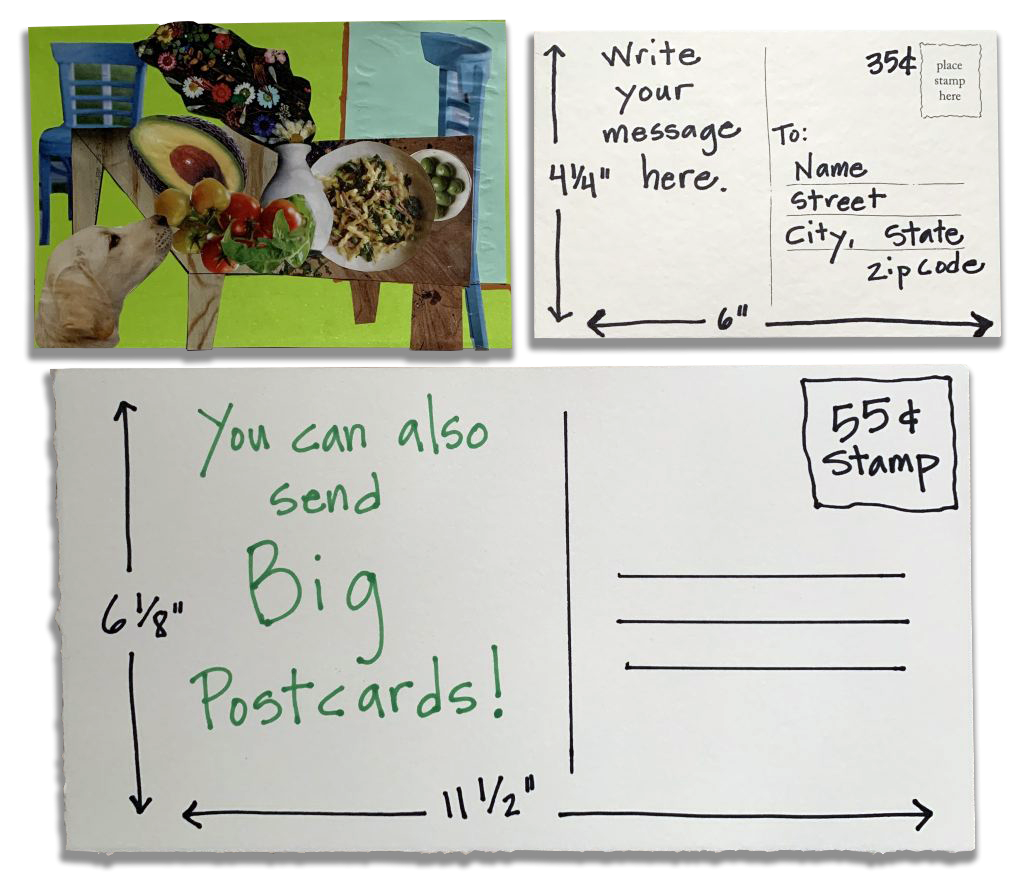Compassion allows us to feel the pain and suffering of others and compels us to hold out a hand as we are able. This can mean helping a stranger who may be struggling, supporting our essential workers, or expressing compassion in a creative way.
We take a look at some of the many inspirational ways people have shown compassion through art, words, and deeds.
Julián with Water Lilies
Water Lilies by Claude Monet
When despair is all around us, there is an opportunity to look a bit deeper and find beauty. Julián Zugazagoitia, Nelson-Atkins Director and CEO, discusses Claude Monet’s famous Water Lilies and how it provided peace to the artist during World War I.
Postcard Activity
Receiving a letter or a card can bring much anticipated news and needed comfort. We can see this in the Thomas Hart Benton lithograph, Letter from Overseas.
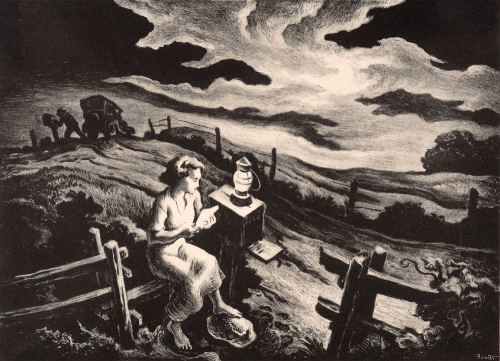
Sending a postcard is one way to show compassion to friends and family members we cannot visit. Find instructions and inspiration for your own postcards.
W. Eugene Smith's "Nurse Midwife" A photo historical celebration of first responders and frontline healthcare professionals
W. Eugene Smith’s remarkable 1951 Nurse Midwife essay for Life magazine tells the inspirational story of Maude Callen. Dedicated to serving poor and chronically neglected communities in South Carolina, Callen worked tirelessly for more than fifty years, doing the work of doctors who refused to tend to the area.
Collection Highlights
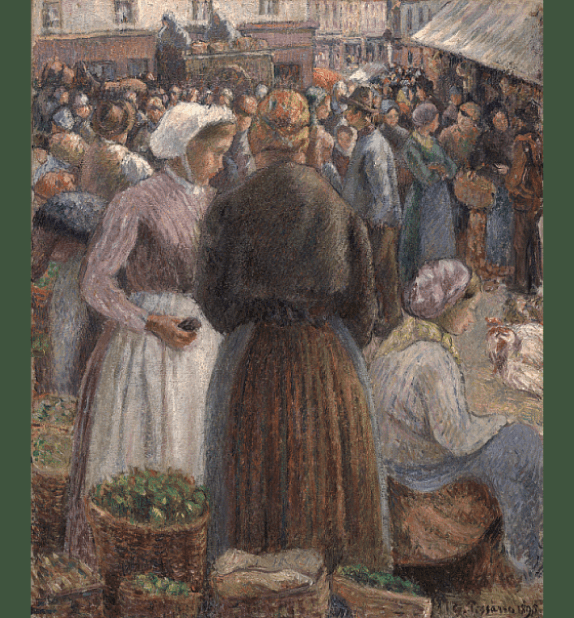
Camille Pissarro loved agrarian France and its people. He painted close-knit communities like Gisors, where market day was an opportunity for families to buy food and check in with neighbors. Imagine yourself in the well-trodden shoes of the two women in the foreground of this scene. How does their work support their families and their community? Do they have aches, worries, hopes for the rest of the day?
Camille Pissarro, French (1830 – 1903). The Market at Gisors, 1895. Oil on canvas, 18 ¼ x 15 ⅛ inches (46.36 x 38.42 cm). Purchase: William Rockhill Nelson Trust, 33-150.
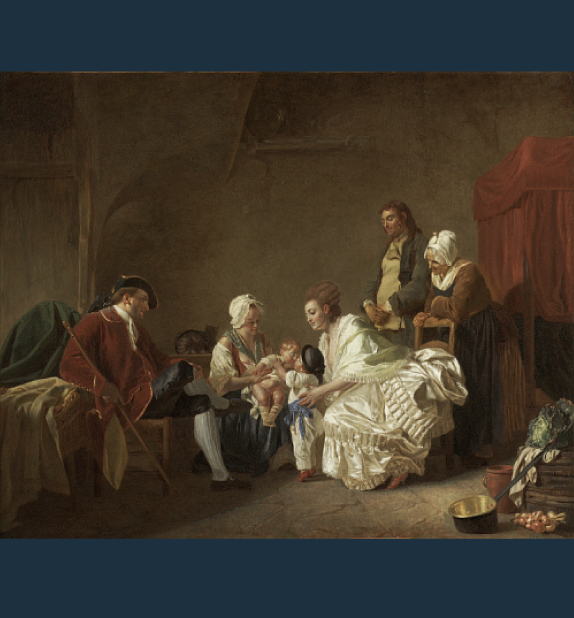
An aristocratic couple brings their eldest son to bond with his baby brother, living away from the family in the care of a wet nurse. Etienne Aubry made this painting when ideas about caregiving in French upper class families were controversial. (Even in 1700s France, parents were judging other parents.) Philosophers and painters debated how to care for children with compassion, to strengthen their family relationships, and prepare them for the world.
Etienne Aubry, French (1745-1781). The First Lesson of Fraternal Friendship, 1773 or 1775. Oil on canvas, 31 ¼ x 38 ½ inches (79.38 x 97.79 cm). Purchase: William Rockhill Nelson Trust, 32-167.
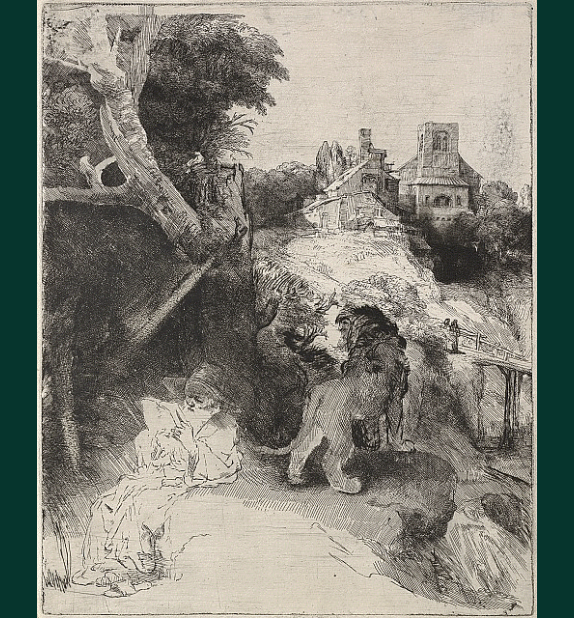
An elderly man sits nestled against a large tree, completely absorbed in a book. Standing guard besides him is a large lion, the faithful companion of the biblical scholar Saint Jerome. According to legend, the saint healed the injured beast by removing a thorn from its paw. This simple act of kindness and compassion earned him the lion’s undying loyalty.
Rembrandt van Rijn, Dutch (1606–1669). Saint Jerome Reading in an Italian Landscape, about 1653–1654. Etching and engraving with drypoint, 10 7/16 x 8 ¼ inches (26.51 x 20.96 cm). Purchase: William Rockhill Nelson Trust, 60-66.
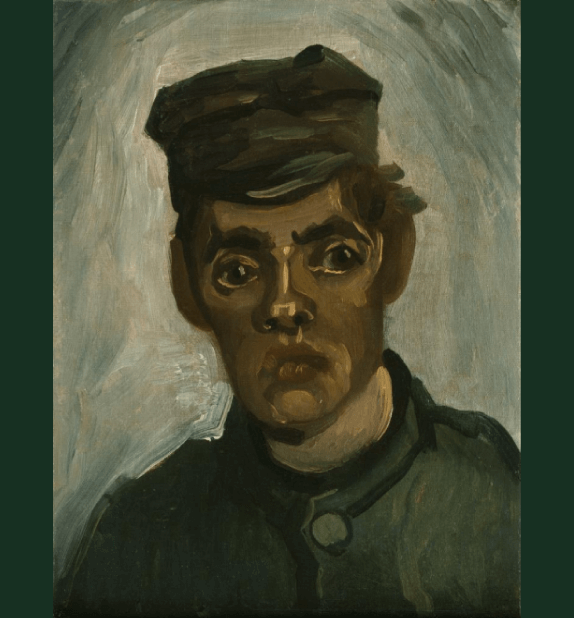
Vincent van Gogh wanted to become a painter of peasants. However, understanding peasant life was not a technique learned in art school. For Van Gogh, it was a lived experience. He wrote to his brother Theo, “it’s right and proper that I should live like an artist in the surroundings I’m sensitive to and am trying to express.” Van Gogh’s compassion for peasants allowed him to convey these individuals with great feeling and sensitivity.

